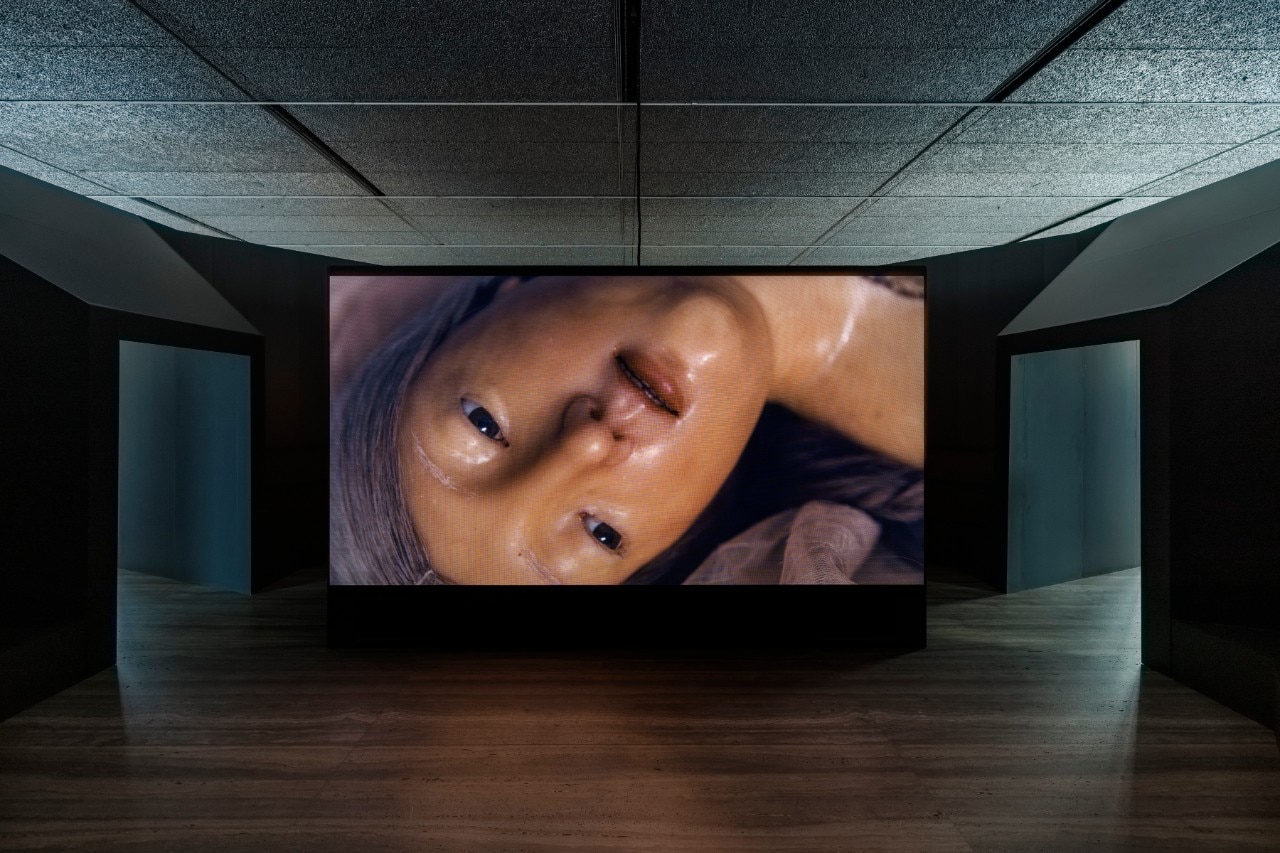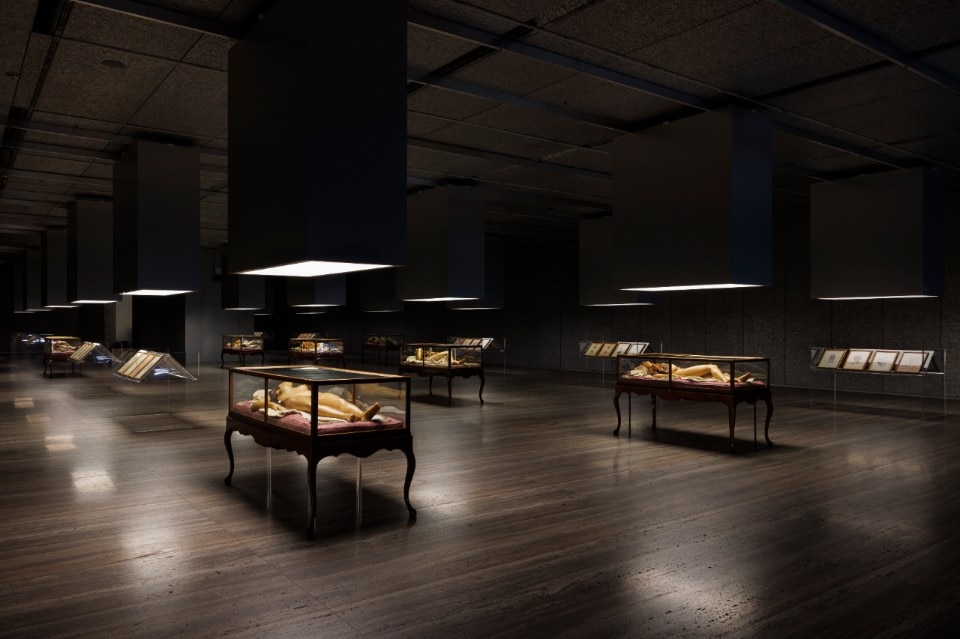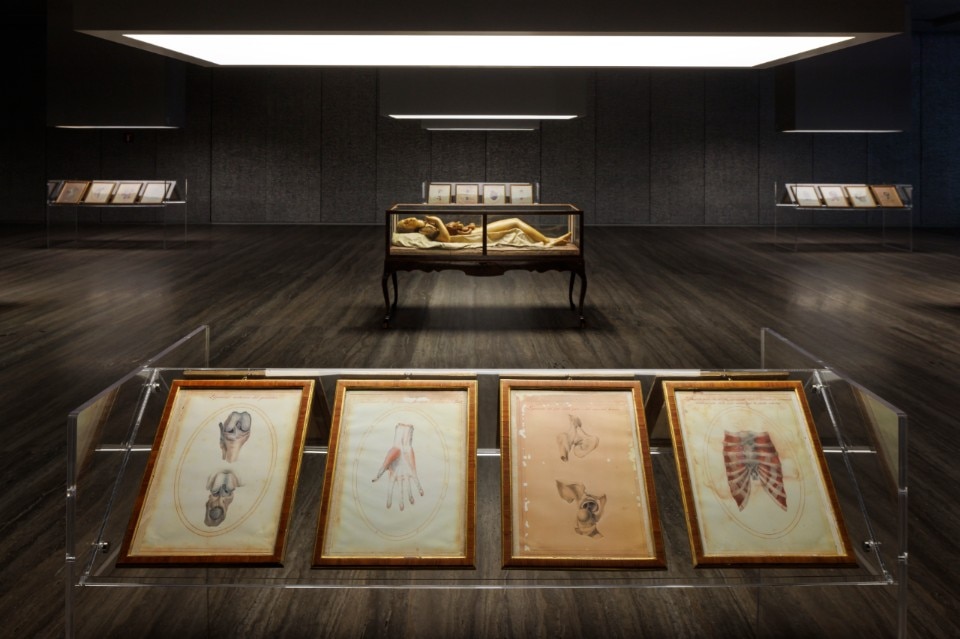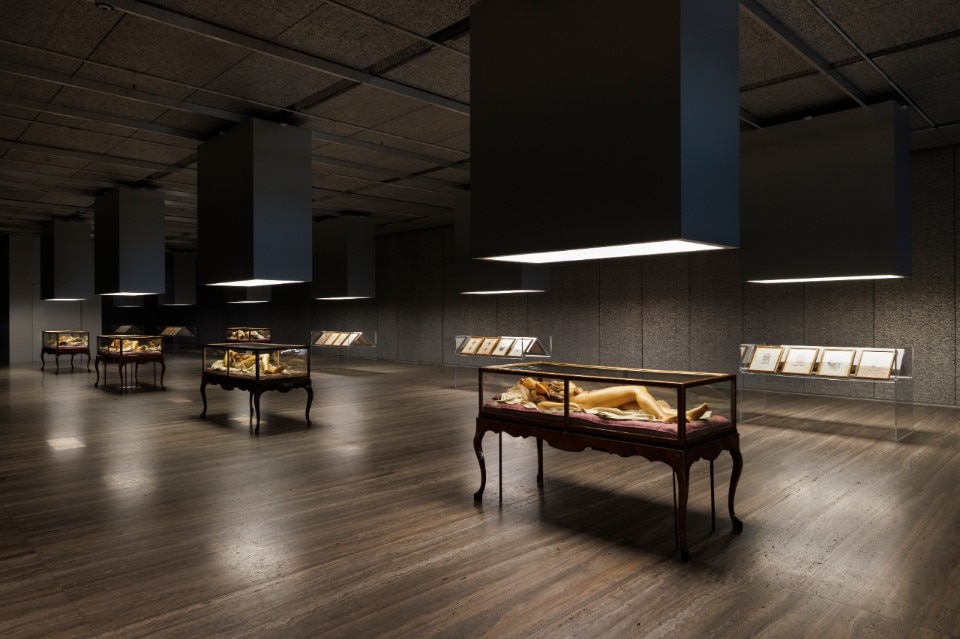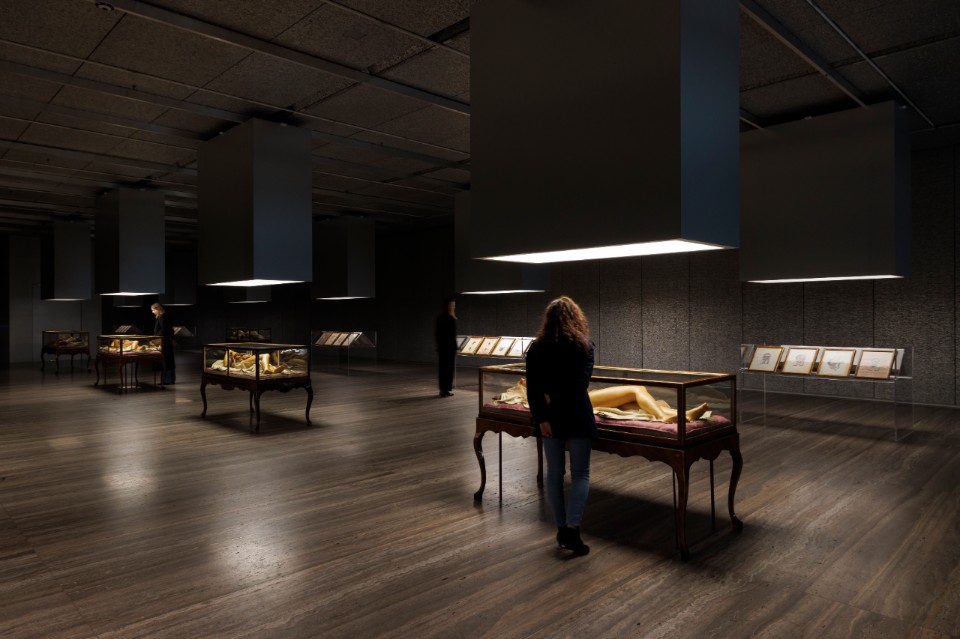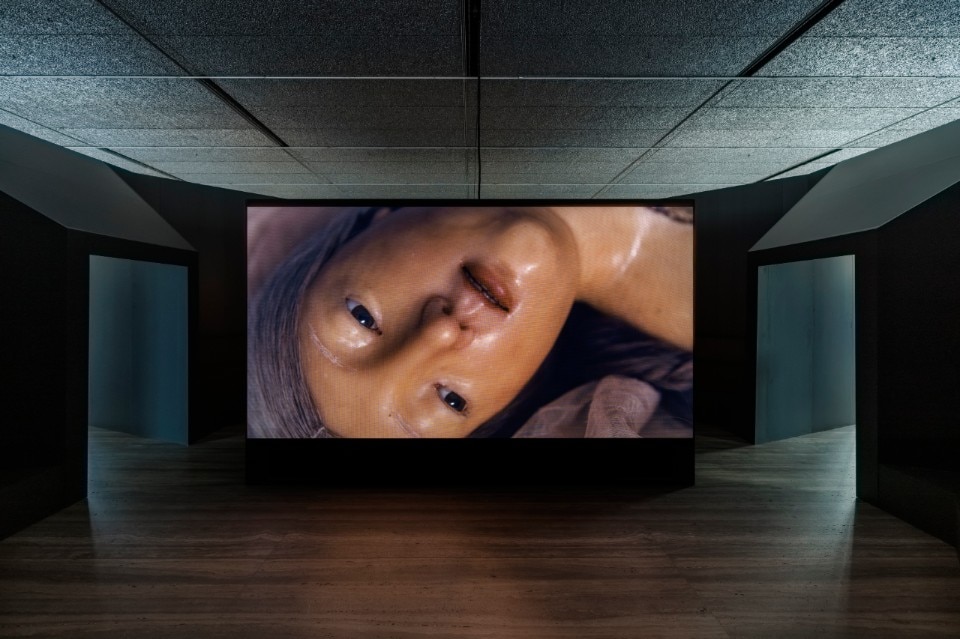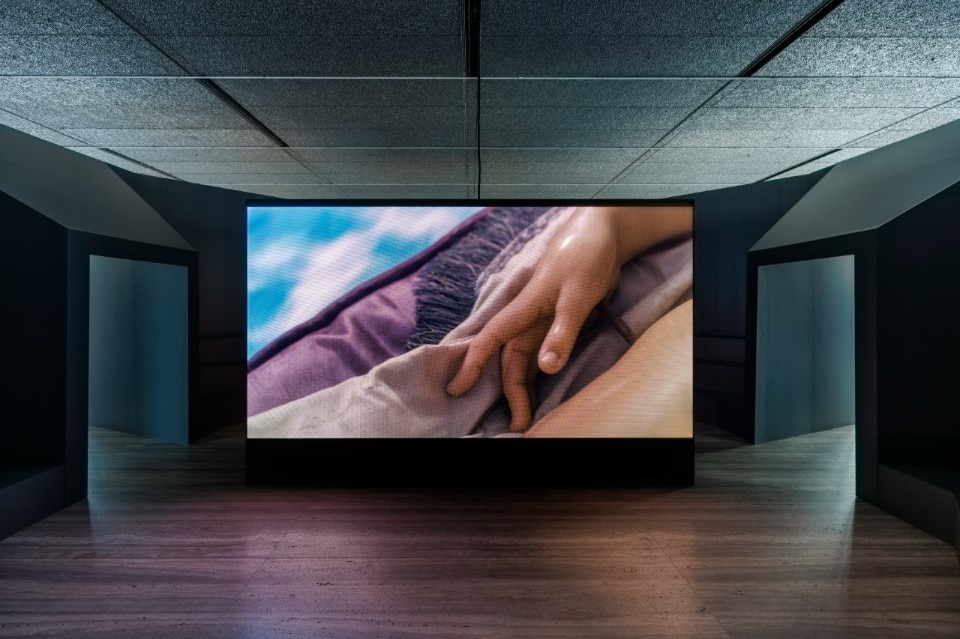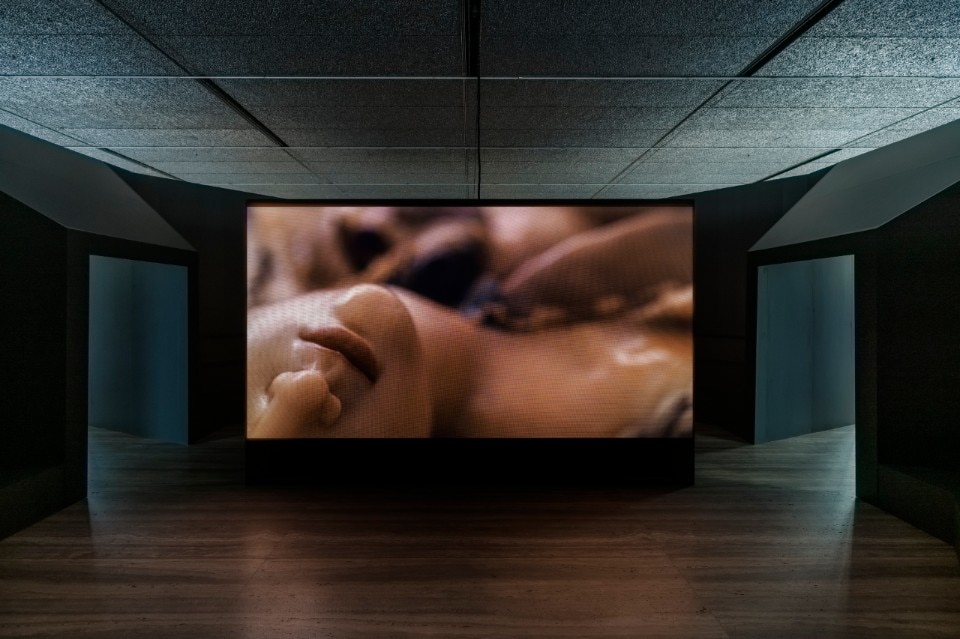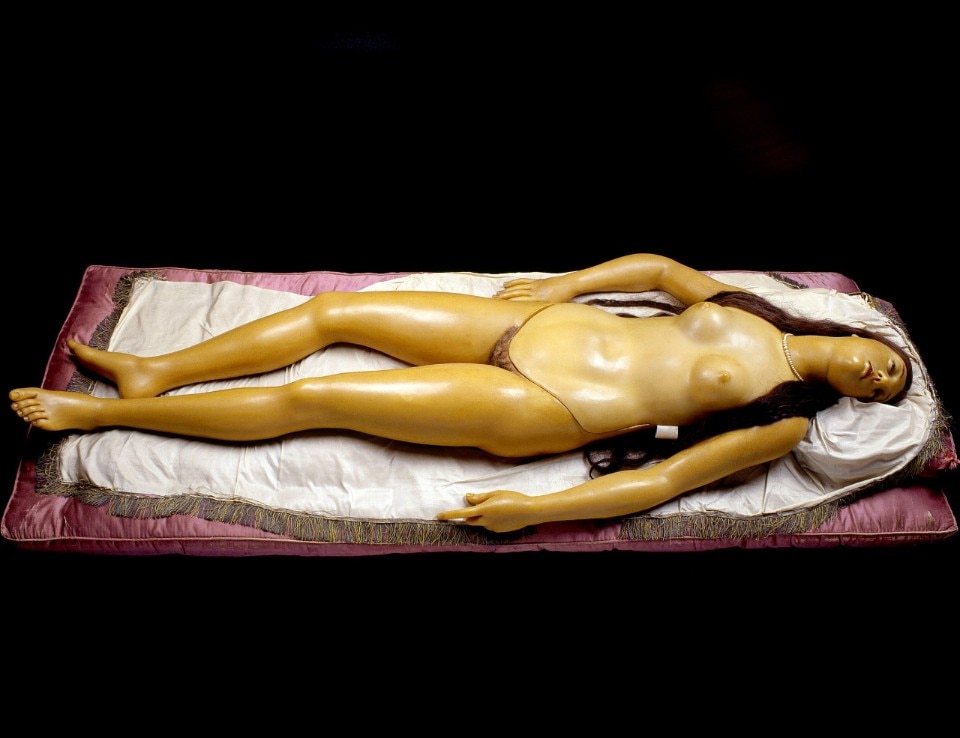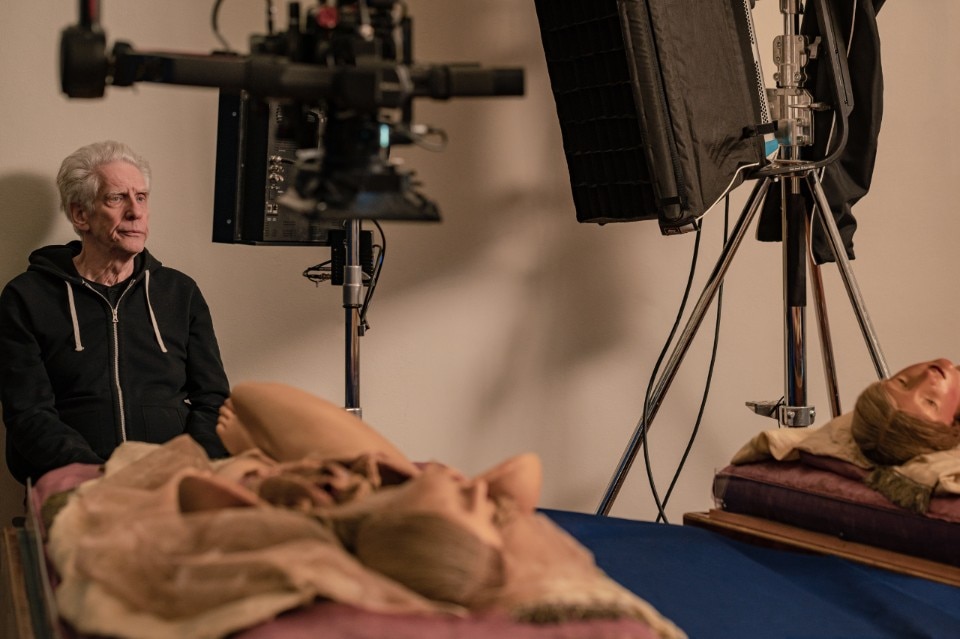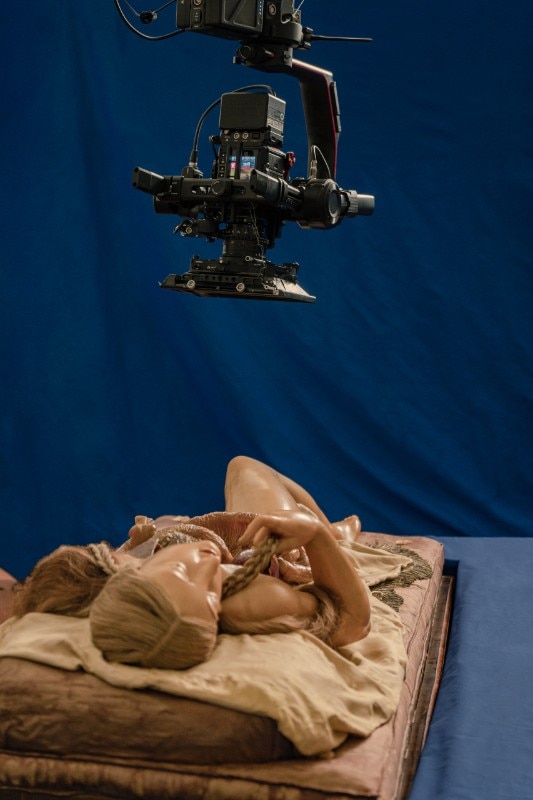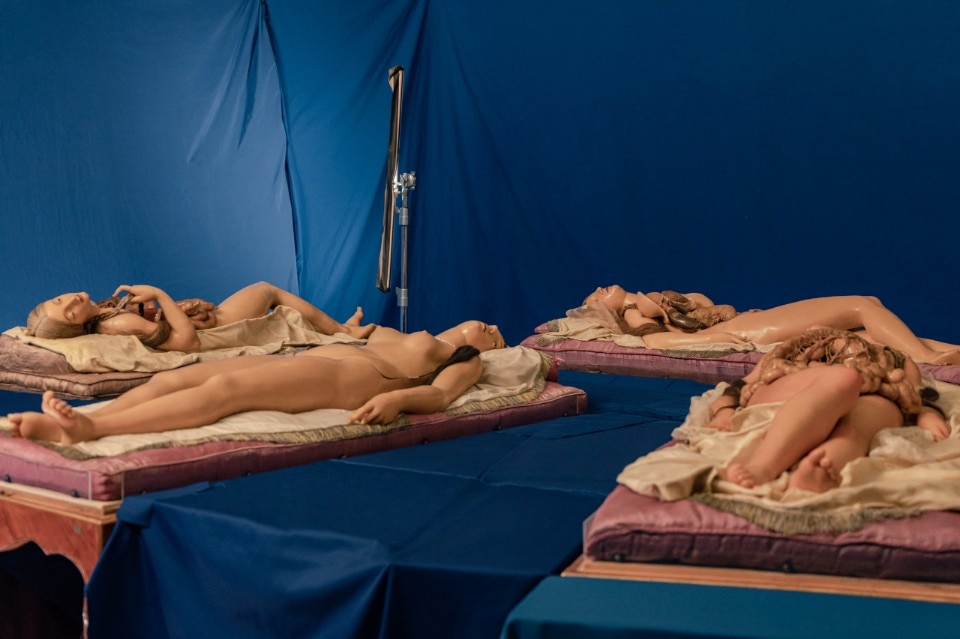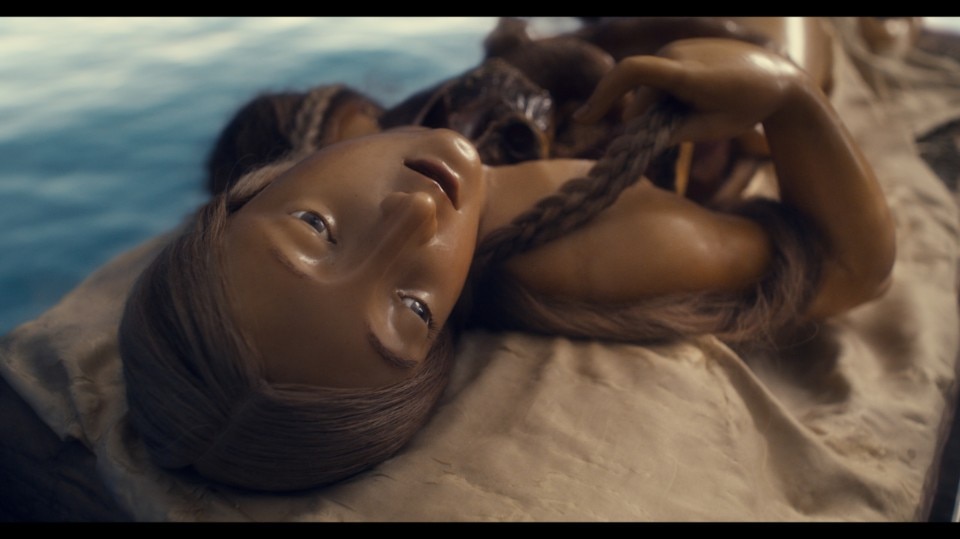Fondazione Prada adds with the exhibition “Anatomical Waxes” a key element to a quest that began in 2019 with “Spitzmaus Mummy in a Coffin and Other Treasures” curated by Wes Anderson. This time Canadian cult director David Cronenberg is at the center of the exhibition.
For the exhibition project, Fondazione Prada is hosting in its Milan location part of the collection of La Specola – part of the University of Florence’s Museum of Natural History, currently closed for renovation (it is scheduled to reopen at the end of 2023). Established in 1775 by Grand Duke Pietro Leopoldo of Tuscany, the museum was the first of its kind to open to the public.
La Specola houses more than 3.5 million animal exhibits, the world’s largest collection of 18th-century anatomical waxes, and the collection of Sicilian waxmaker Gaetano Giulio Zumbo (1656-1701). Among the wax works, of particular beauty and charm, four reclining female figures are presented – the so-called Venuses. One of them is a Mater gravida who conceals a fetus under the seven decomposable parts. They are the protagonists of the exhibition at Fondazione Prada.
Gli scultori non volevano che queste figure apparissero sofferenti o sotto tortura, o ancora imprigionate o prive di vita. Volevano farle sembrare vive e in qualche modo pienamente parte dell’esperienza di esporre l’interno dei propri corpi.
David Croneberg
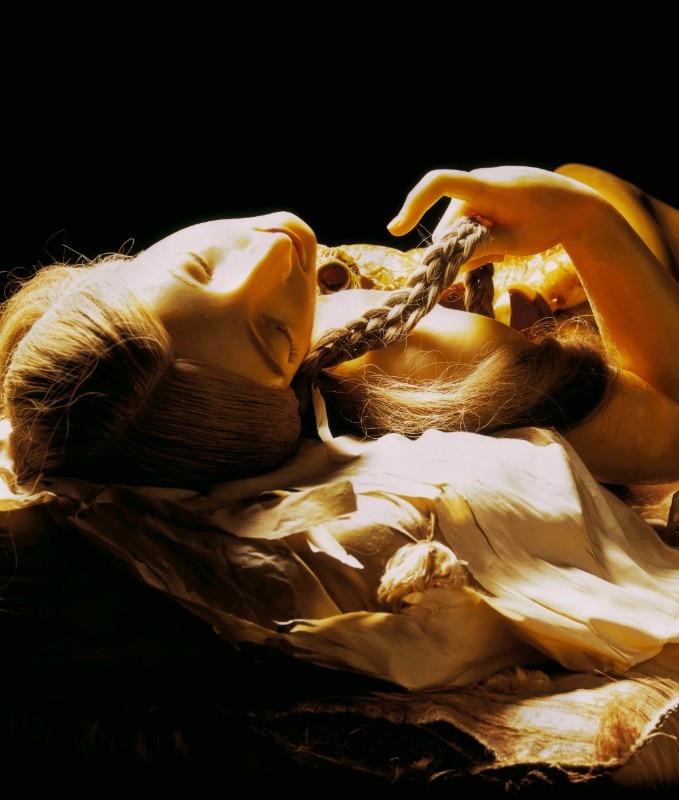
The Milan exhibition brings together thirteen ceroplasts depicting female anatomical models to focus on the representation of women’s bodies. A perfectly epilated body, adorned with strings of pearls: half-open lips and hair perfectly coiffed according to the 18th-century customs. The models well represent how the female body was seen in a purely patriarchal society, with an unmistakable artistic touch, even though the waxes were created first and foremost as a didactic tool.
Four Unloved Women, Adrift on a Purposeless Sea, Experience the Ecstasy of Dissection is the work created by David Cronenberg for this very exhibition. A cult director, he emerged in the 1980s and following years as a master of visionary and horror cinema centered on the human body and its mutations and contaminations, with films such as Videodrome (1983) or The Fly (1986), up to the seminal eXistenZ (1999) and his recent return with the enigmatic Crimes of the Future (2022).
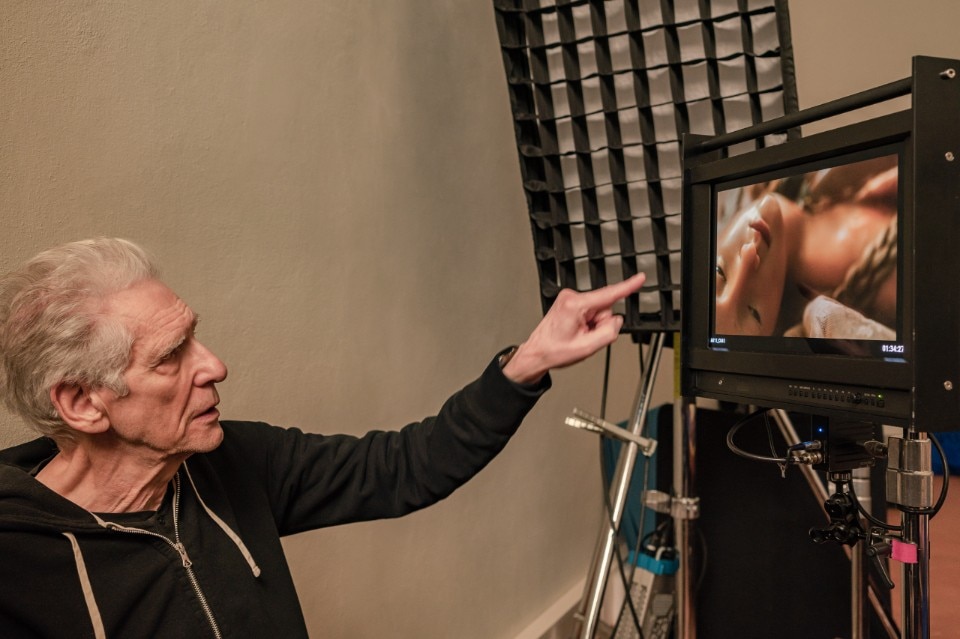
For “Anatomical Waxes”, Cronenberg creates a short film that offers a gendered reading, focusing on the female bodies in anatomical collections and how women’s bodies have been represented through artistic means for scientific purposes. “The sculptors did not want these figures to show suffering or suggest the idea of torture, or even imprisoned or lifeless. They ended up producing living figures that somehow actively participate in the experience of exposing the inside of their bodies”. Following this direction, the director makes a video in which these figures sway gently on the bright blue water of a swimming pool. Their skin shines shiny and smooth reflecting the sun’s rays, their faces in ecstasy as, slowly, their bodies dissect. The scenes generate both disturbance and fascination at the same time, seemingly “easy” feelings to arouse, for one who (Cronenberg) has been moving on this thread for over forty years.
The ceroplastic works from La Specola have always fascinated visitors, arousing feelings oscillating between fascination and disgust. After seeing them, Hermann Melville – the author of Moby Dick – called them “Horrible and nauseating” in 1857. Since then, time has not undermined the power of these works. On the contrary, they enact a claim to relevance, in our contemporary imagination.


